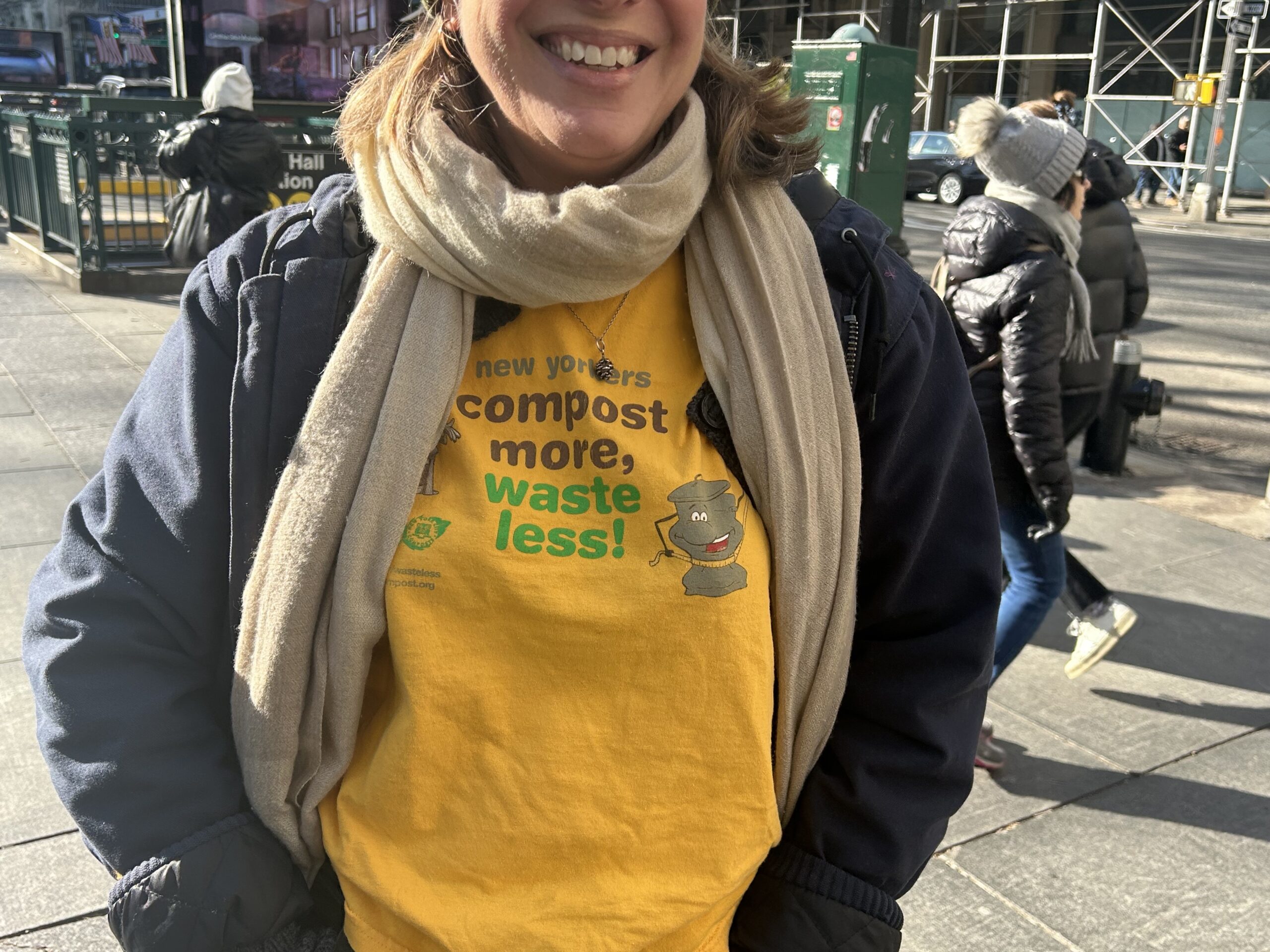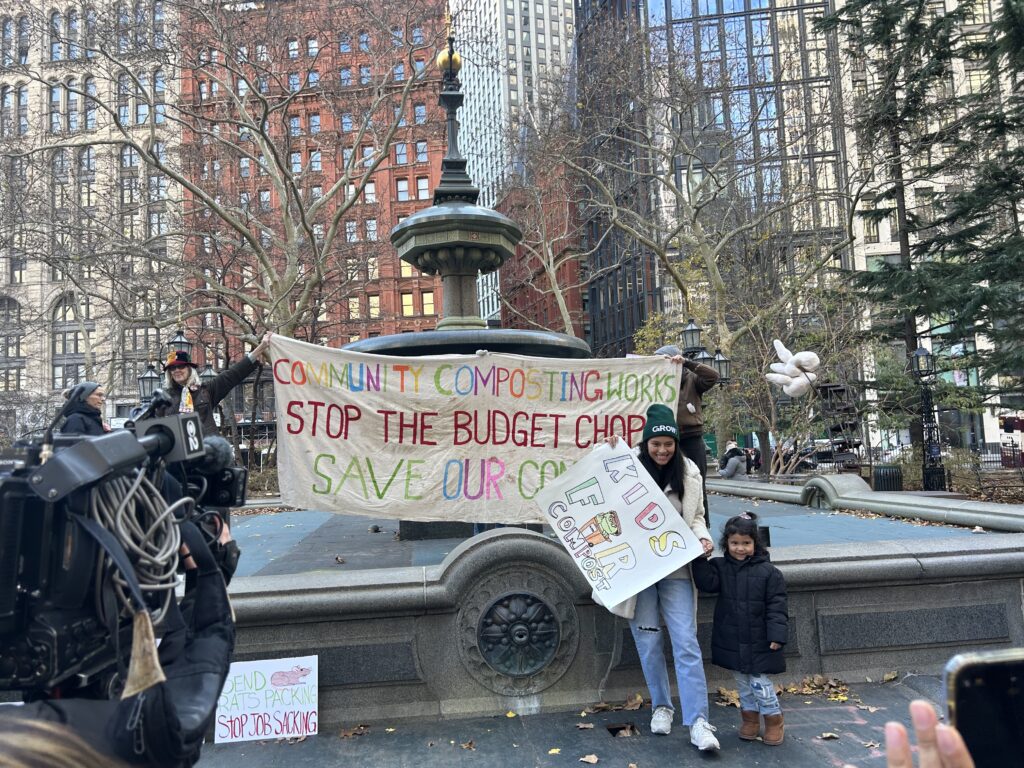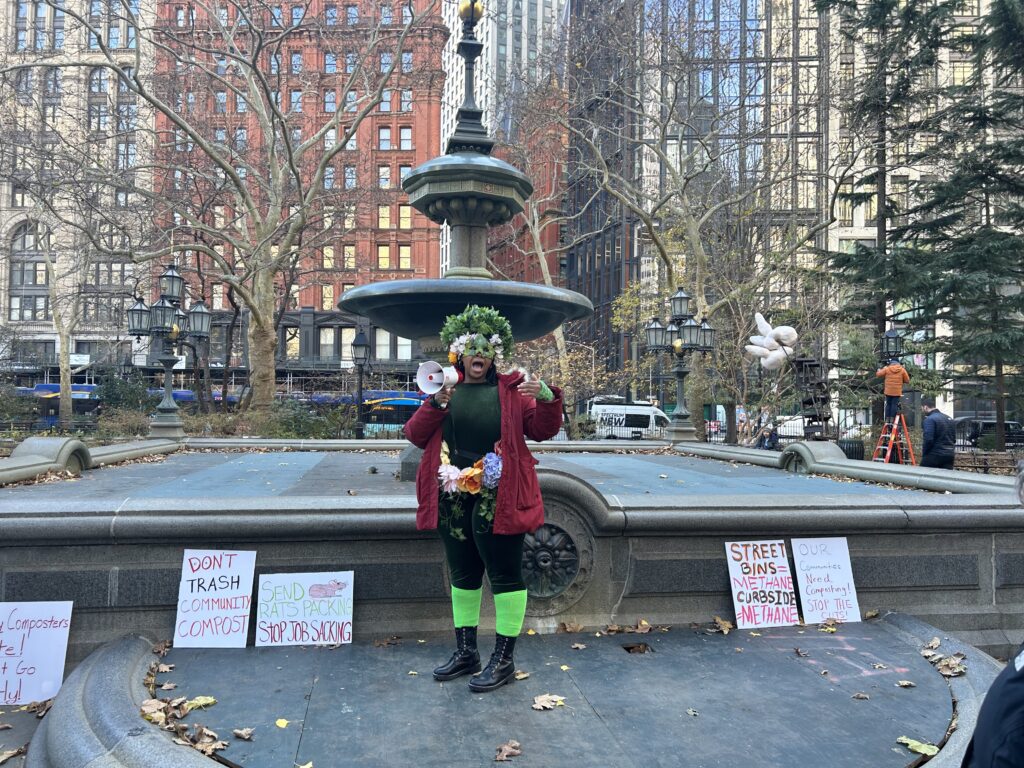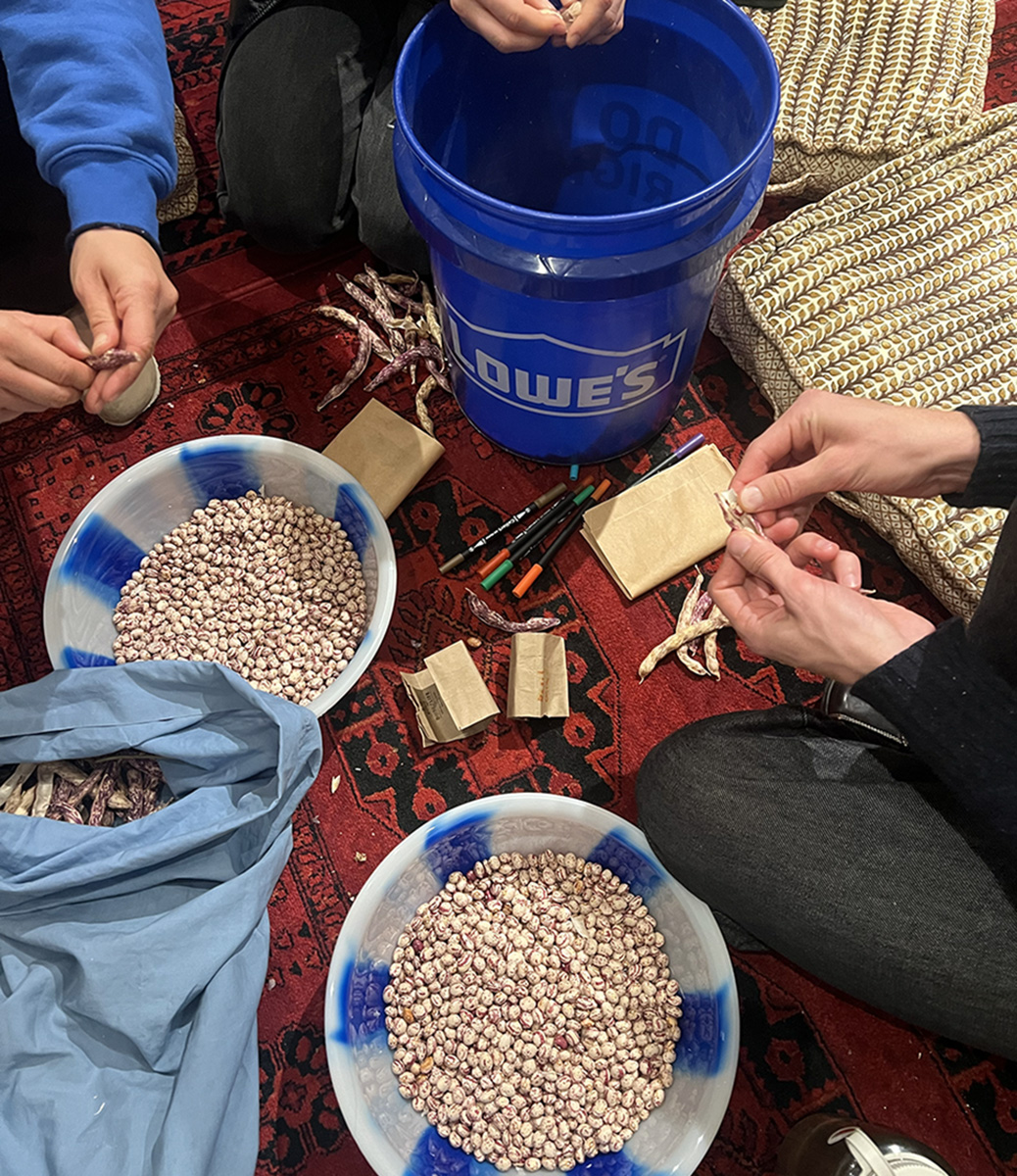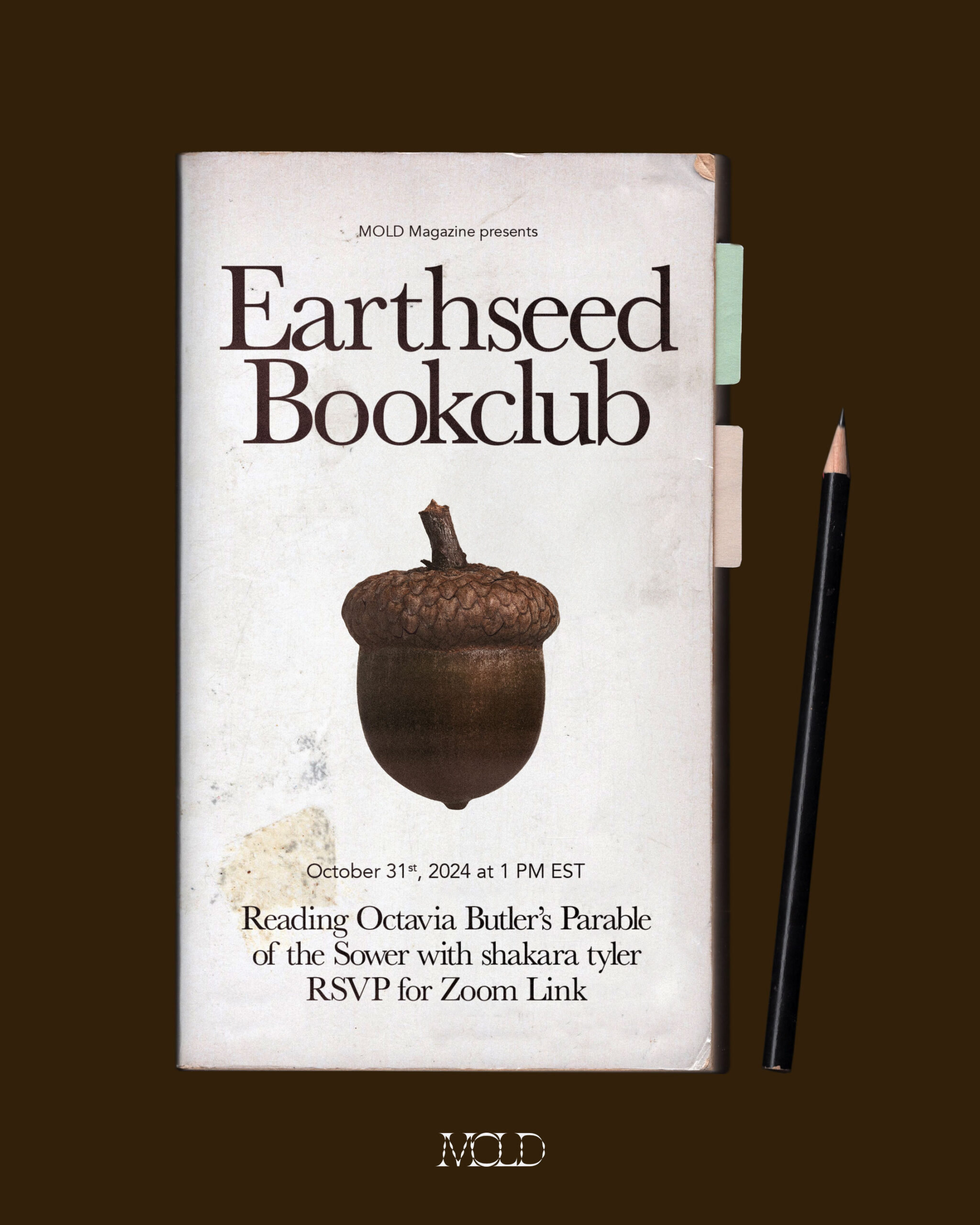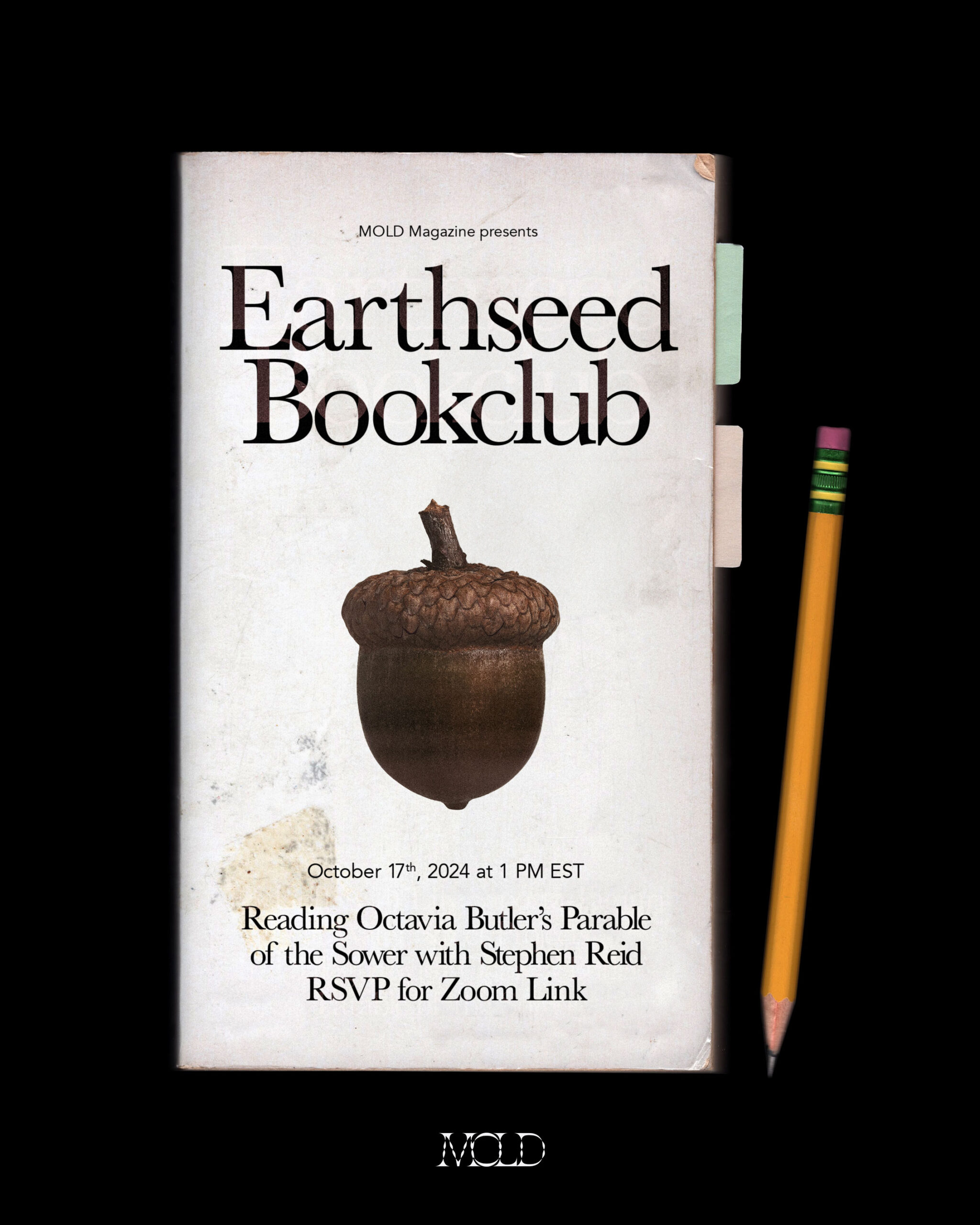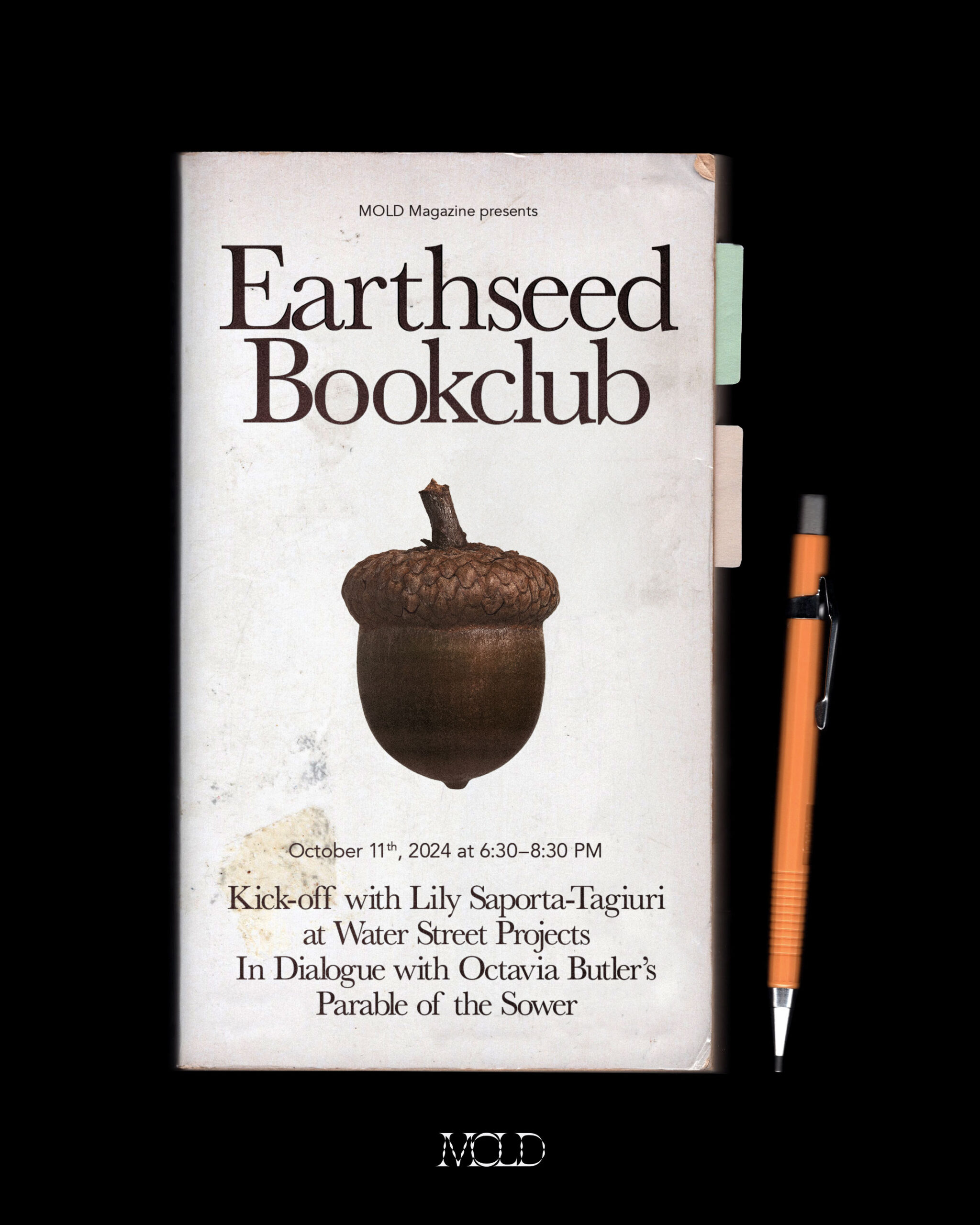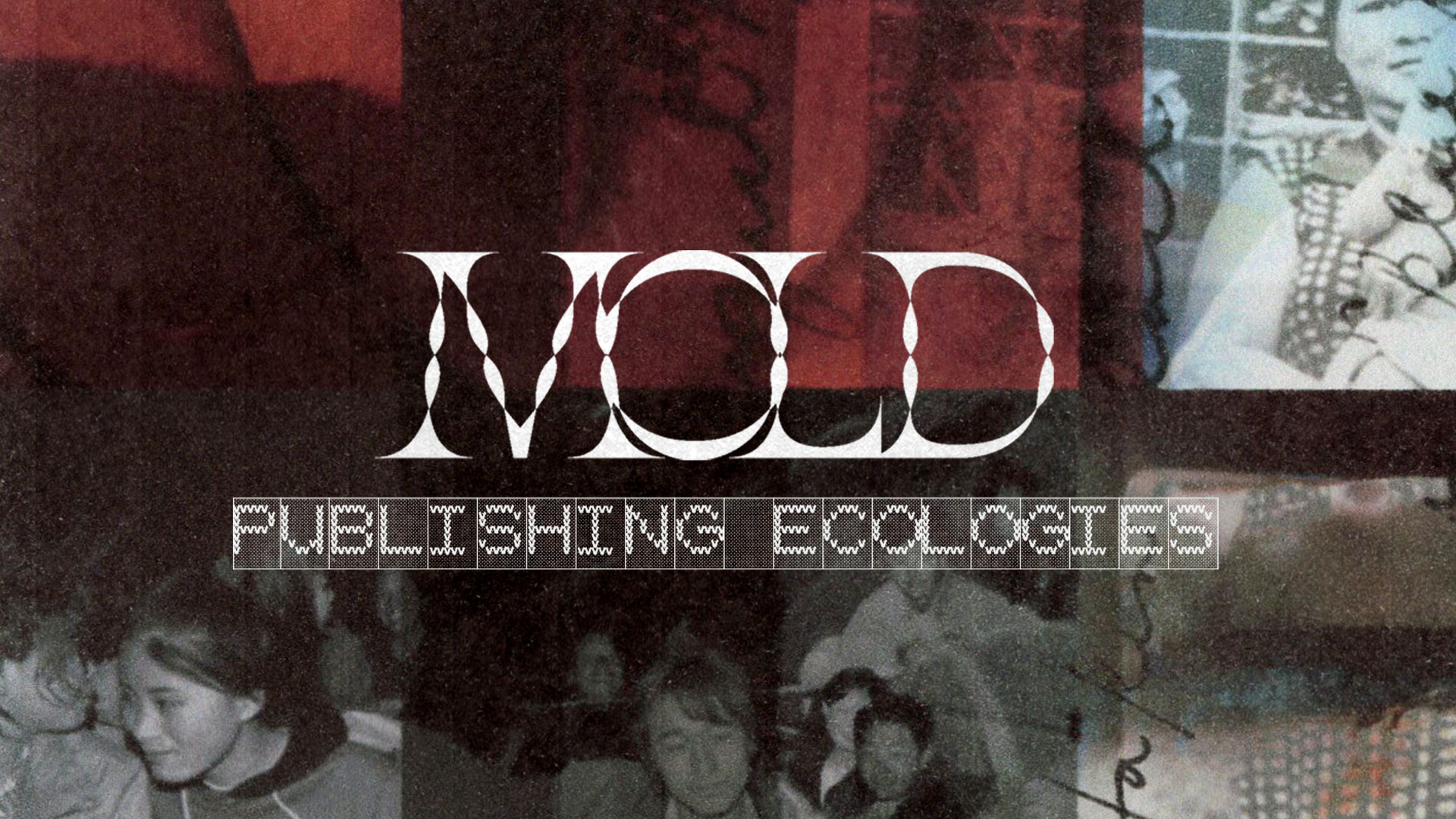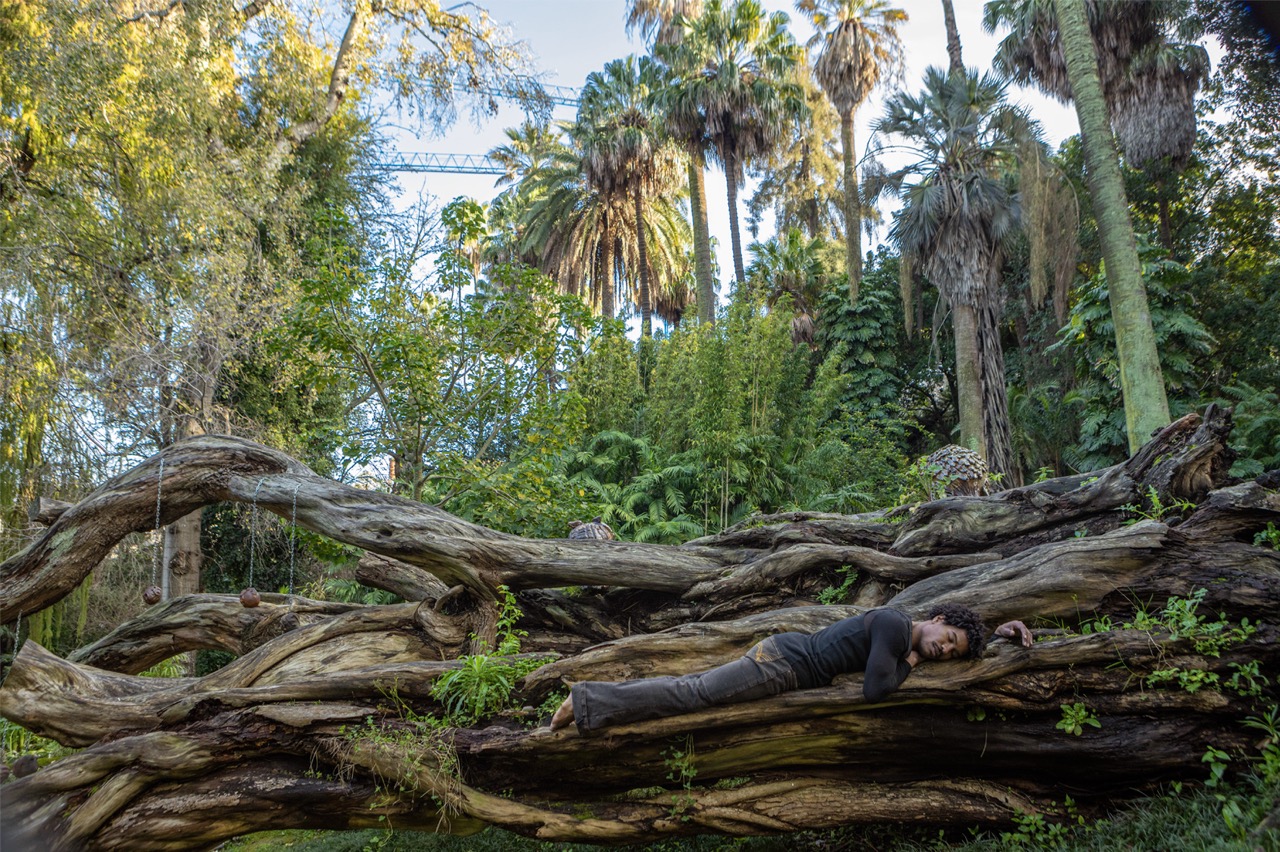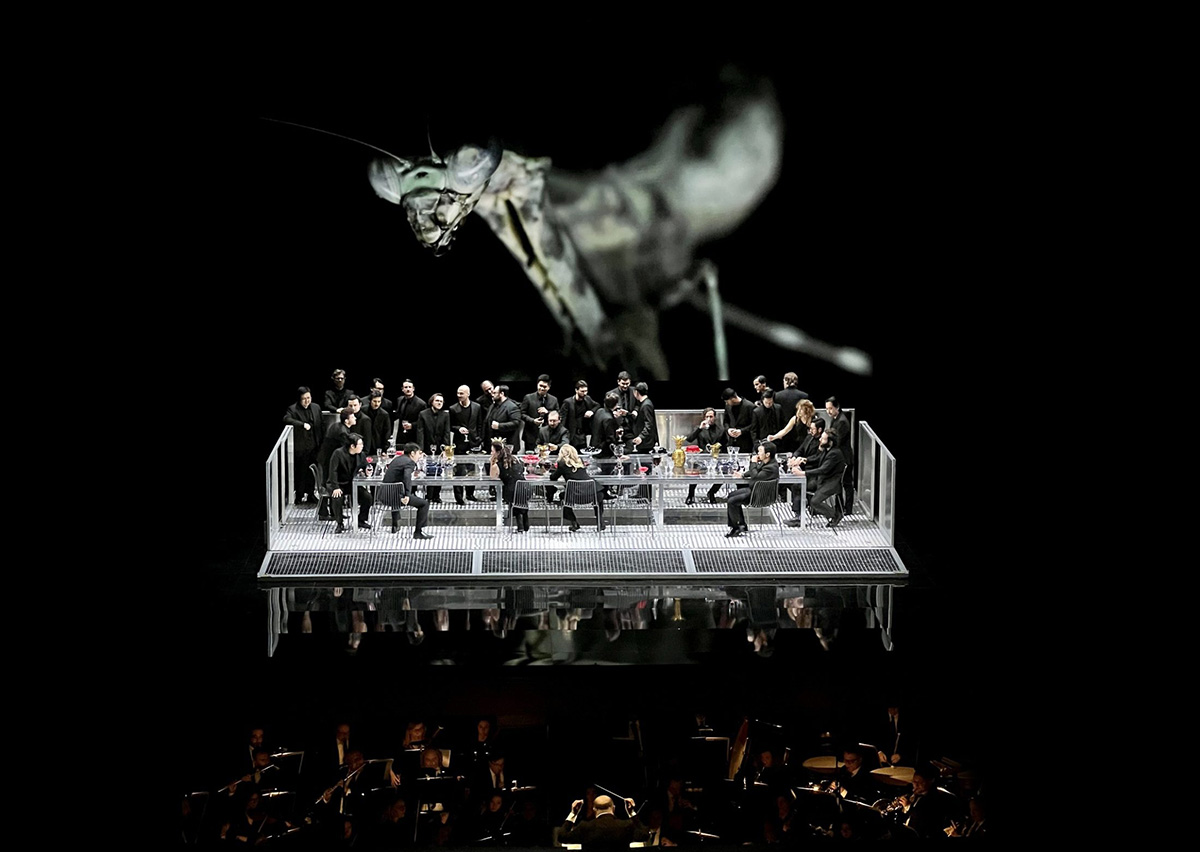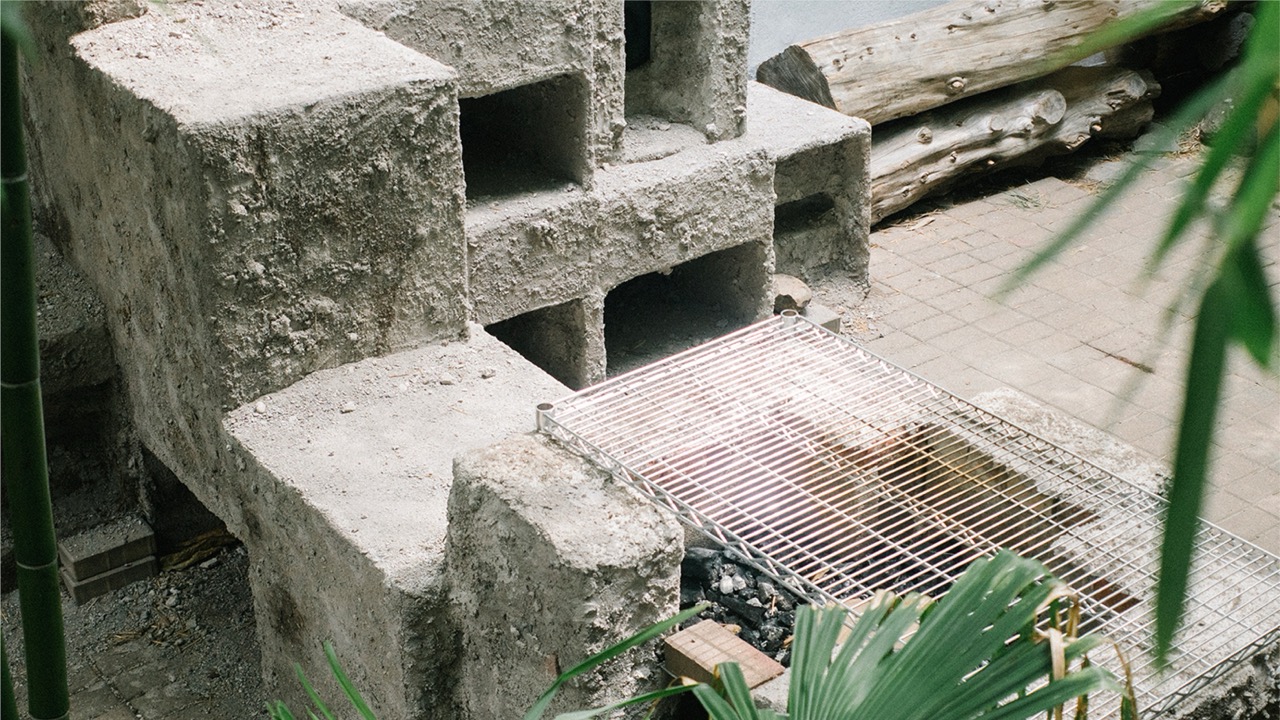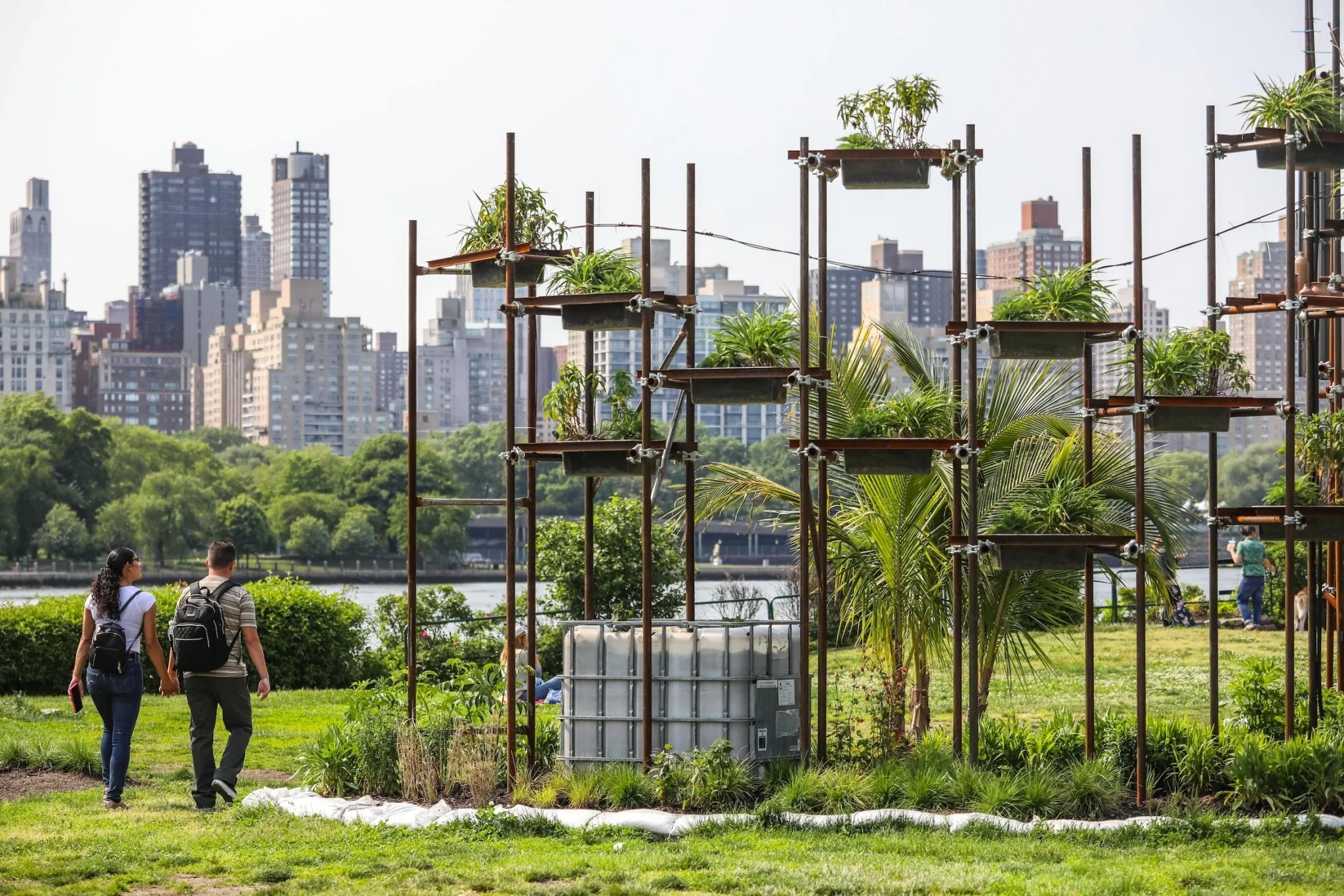“These worms have been to dozens of libraries, schools, and community gardens,” a man said into the mic, lifting a clear plastic tank filled with soil and worms in the air to cheers from the crowd, “I have taught a lot of children and people about the importance of composting with them.”
Earlier this month on December 6th, city compost workers, enthusiasts, and environmentalists gathered outside of New York City’s city hall to protest budget cuts that would end funding to the city’s community compost programs. Perhaps the only protest in recent memory to feature a full worm-bin demo, tens of dozens of New Yorkers had come together to show their solidarity with the soil. Chants were led by masked green superhero Queen GreenFeen, a New York native who promotes environmental sustainability through hip hop. Throngs of supporters held homemade signs, and a pair of compost workers near the back of the crowd donned mushroom hats. Though the atmosphere was light-hearted, the reality of what was at stake under a looming December 31 deadline lent a somber tone. New budget cuts would not just bring an end to funding for the NY Compost Project, which is made up of organizations like GrowNYC, Lower East Side Ecology Center, Big ReUse, Earth Matter, and the botanical gardens, but also place an extensive network of environmental initiatives and educational programs across the city on the chopping block.
“The reason why I love this work is because compost is a practice for people,” Lila Livingston who works as a compost associate at the Lower East Side Ecology Center tells me, “It’s an individual practice that people choose to participate in, but also it is a site of communal experience.”
The Ecology Center, which first started as a grassroots campaign for community compost in 1987, currently runs four of the 266 food scrap drop-off sites where New Yorkers are able to bring their food waste to be composted. According to GrowNYC, food scrap drop-off sites like those across the city’s greenmarkets divert over 8.3 million pounds of organic waste from landfills every year. “Community compost drop-off sites are these places where people are able to have organic connections with other people in the community — it’s no coincidence that so many of our regulars are elderly New Yorkers. And as a person who staffs the community compost drop off site, I bear witness to that exchange all day,” says Lila, “It’s not an understatement to say that that process is transforming the way we manage waste in the city, and has encouraged enough people to do it so that it is having a collective impact on our waste stream.”
City-managed compost, on the other hand, is being transformed into an engineered bioslurry, or EBS, that is contributing to the city’s greenhouse gas emissions.
At the time of the rally under the proposed budget cuts, almost 200 of community composting sites would be shut down and over 100 workers were at risk of losing their jobs. One compost worker named Chris from the GrowNYC Workers Collective, which unionized earlier this April, argued that the cuts spell out a dire future for sustainability in the city, “Community composting engages us all in sustainable work that is meaningful and immensely grounded in reality. I would like to ask Mayor Adams to explain to me how the closure of over 200 collection sites, the delaying of the rollout of curbside compost collection in the Bronx and Staten Island and the elimination of jobs across New York City Compost Project, 60 of which are from my organization alone— 53 of those being union jobs fits into the sustainability initiative that your administration put forth.”
In addition to food scrap drop-off sites, compost processing sites run by community organizations under NYC Compost Project will also face closures by December 31 if changes are not made to the mayor’s budget cuts. Important civic initiatives like the Department of Sanitation-run Master Composter certificate program, a free certificate program that provides compost and soil education to New Yorkers, could also be gutted.
Jess Turner, a Brooklyn-based herbalist who runs Olamina Botanicals, credits the Master Composter certification for providing essential environmental education that she now uses regularly as a compost researcher in New York City’s community gardens. “I had been working with plants for a long time, but I didn’t have a background in Earth sciences. To be able to experience compost training, to look under a microscope, to perform site visits, and learn strategies for maintaining a compost pile — these are all important skills I’ve been able to implement across my working life,” she says.
Jess’s research, which is funded by the USDA and centers quality of compost (according to her findings, compost produced in New York’s community gardens is categorically of higher nutrient profile than commercial compost), implements participatory research methodologies that allow community members, who might not typically have access to research resources, to design experiments to address issues and questions in their own neighborhoods, “Master composting is popular education,” she emphasizes, “It helps empower a group of people to then go out into their own communities and empower more people.”
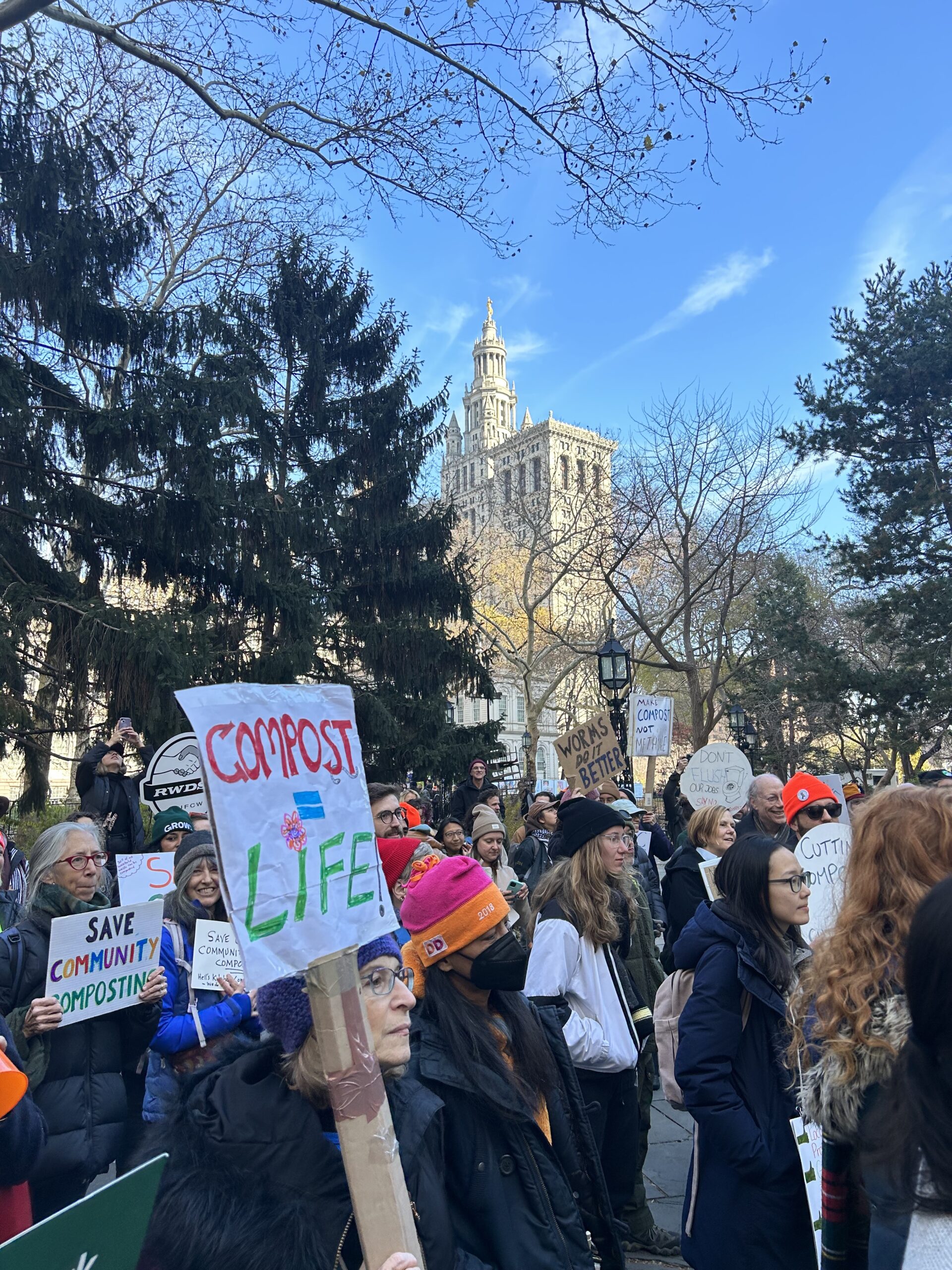
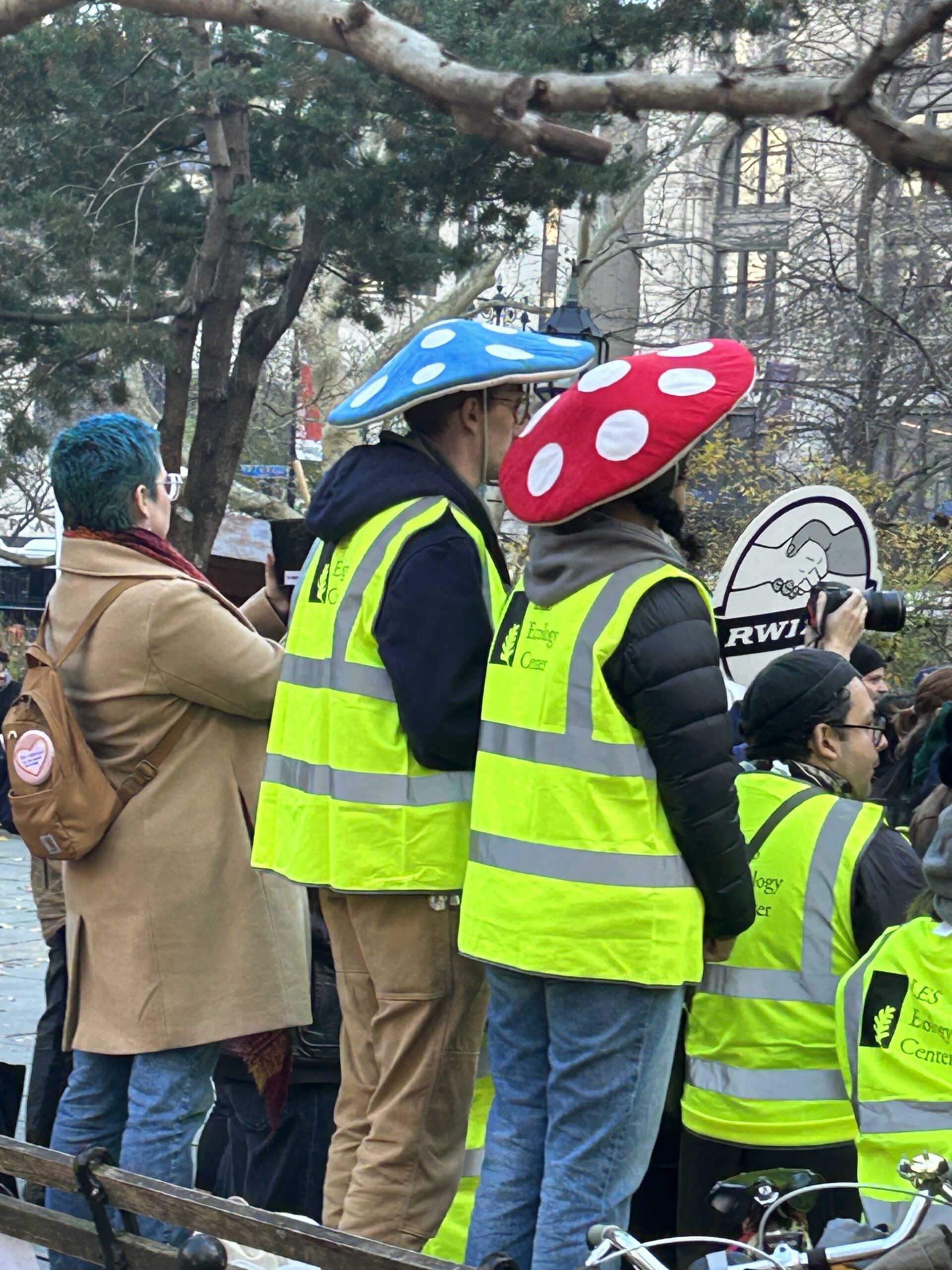
At the rally, attendees were invited to step up to the microphone to share why they compost. With the starting point “I compost because”, they outlined their hopes for our climate future, and how compost allows them to connect with the environment in a city where that often feels hard. “I compost because our city compost makes an engineered bio-slurry,” one woman interjected.
Compost advocates will have you know there is a difference between the outputs of community compost and the city-run compost program. Community-run composting sites generate rich, nutrient-dense soil that is then redistributed to community gardens and parks across the city. City-managed compost, on the other hand, is being transformed into an engineered bioslurry, or EBS, that is contributing to the city’s greenhouse gas emissions. Initially proposed by the Department of Environmental Protection and National Grid, the program, which aims to convert food waste into heating fuel, has encountered major system failures that not only advance climate change, but also portend cracks in Mayor Adams’ ambitious mandatory composting plan, which is set to roll out across all five boroughs by 2025.
Currently, the city collects food scraps from orange and brown bins across the city, bringing them to waste management sites to be pulverized into a milky, bisque-like substance. The bioslurry is then transported to the Newtown Creek Wastewater Treatment Plant in Greenpoint to be metabolized by two 145-foot tall silver “digester” eggs into water, carbon dioxide, and biogas. However, earlier this November, environmental watchdog groups reported seeing a haze of burning natural gas around the digesters. Due to equipment issues the facility was unable to feed the fuel back into the city’s heating supply, and was instead burning off the biogas, releasing greenhouse gasses into the air.
Community composting engages us all in sustainable work that is meaningful and immensely grounded in reality.
“People are kind of getting gaslit,” says Jess, reflecting on eager composters who have been bringing their scraps to QR-code activated smart bins that started popping up on neighborhood blocks earlier this year, “The truth is it’s not compost, it’s greenwashing.”
Since the rally, GrowNYC has received an anonymous donation to sustain its operations until the end of the city’s fiscal year in June of 2024. While this provides temporary relief for the city’s largest community composting organization, the fate of the other NY Compost Project organizations and programs as well as the future of composting in New York as a whole hangs in flux. At the time of this article, over 46,000 people have signed a GrowNYC petition urging the mayor to put a halt to the elimination of community composting organizations. Tied up in the plight of compost is a broader fight for essential resources like public libraries, parks, and universal Pre-K that would also be decimated by Mayor Adams’ proposed budget cuts. In thinking about New York and its networks of care, it is, perhaps, helpful to view the intertwined fates of these resources through the lens of compost and the cycles of life it engenders. In order to midwife a more vibrant, sustainable future for our city we must first acknowledge the interdependence of our communities, our resources, and our environment.
